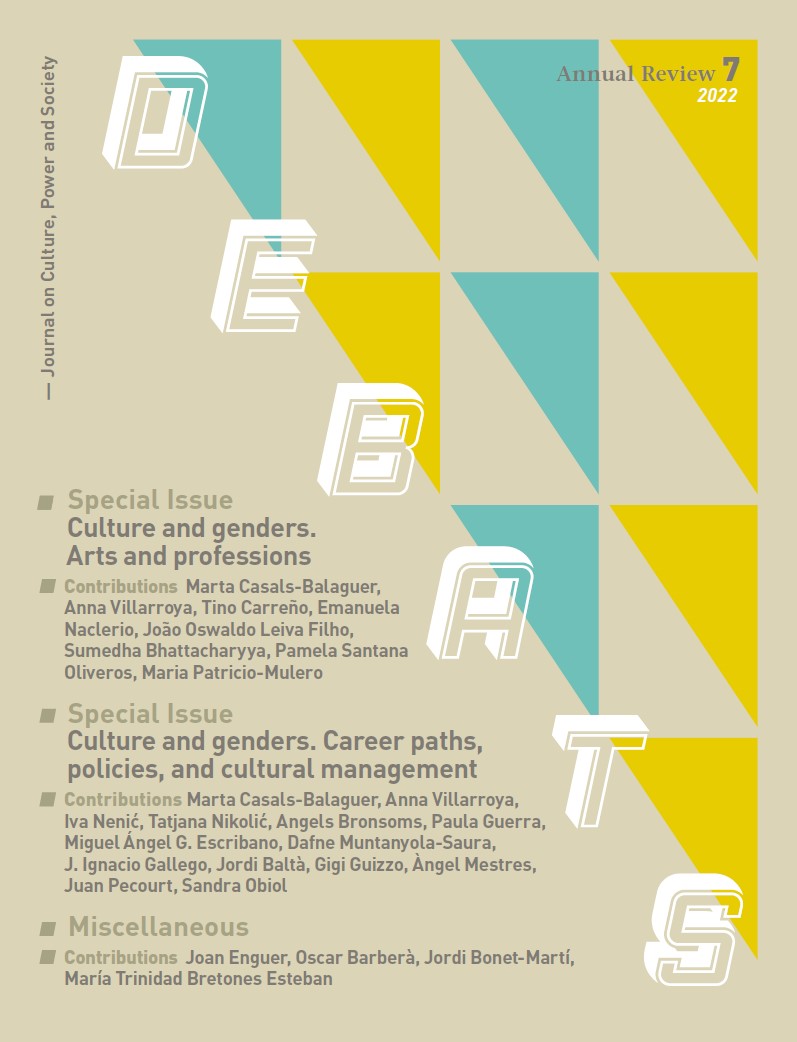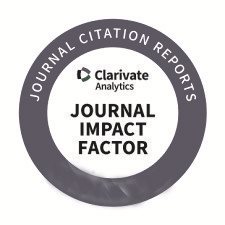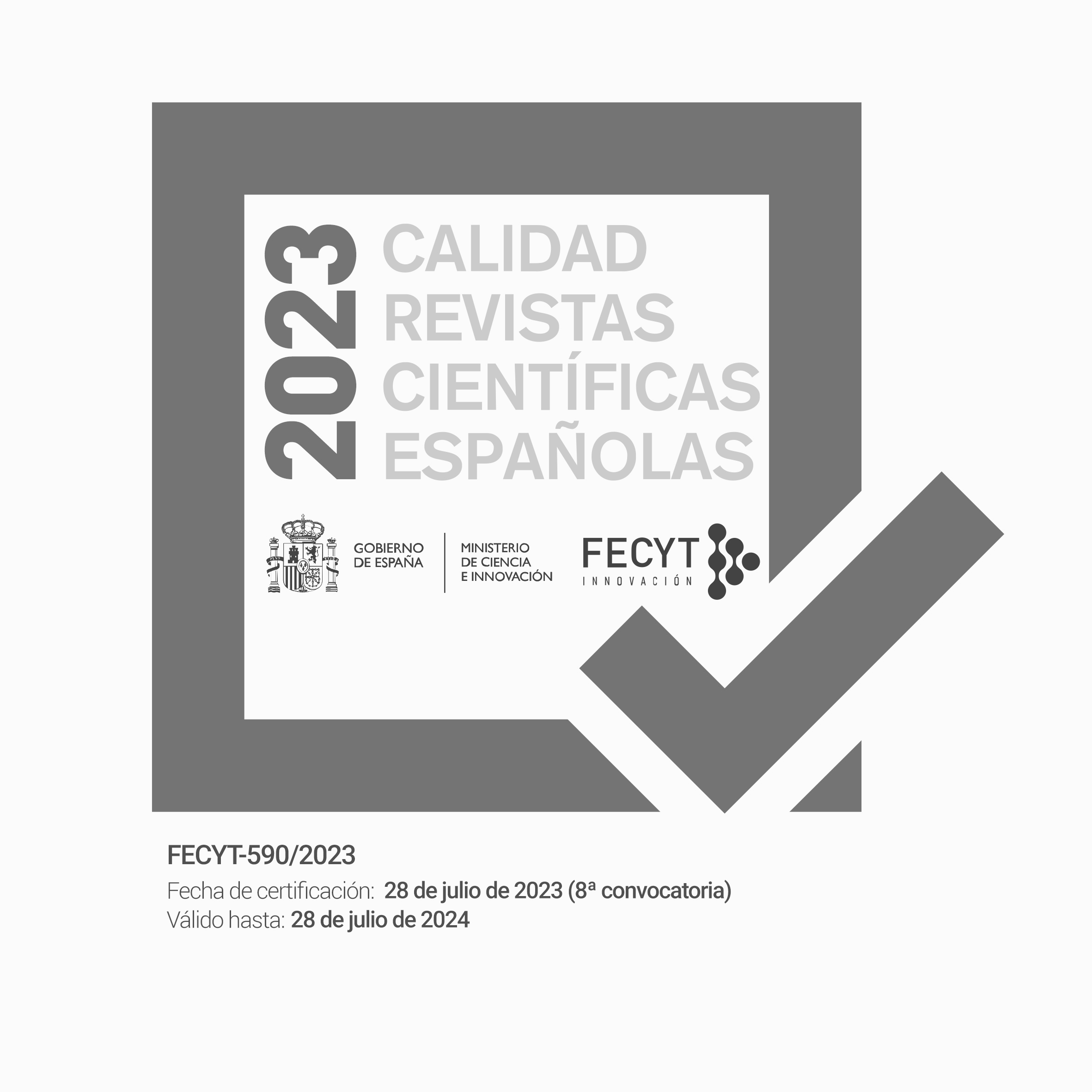Gender inequalities in the music industry in Spain: A mixed methodology study
Paraules clau:
epistemic injustice, gender inequality, music industry, methodologiesResum
In today’s music industry, many female workers live experiences of injustice and inequality that, whether perceived or not, are caused by and simultaneously affect both the system of music production relationships and daily their lives. These experiences are already evident from the state of ignorance associated with the absence of databases and records of economic activities by disaggregated by sex in this industry. This article attempts to answer a question: how can we investigate the possible experiences of gender injustices and inequalities when there are no official records to shed light on the basic structures that order the relationships of production affecting daily life? This is even more true now that there is ample evidence of the historical inequality of women compared to men in most labour fields. Therefore, the mixed methodology we used here responds to the injustice and epistemic ignorance underlying the present structure of labour relations and family reconciliation. This approach allowed us to undertake an exploratory and descriptive analysis of the situation of women in the music industry from this initial premise. The aim of this work arose from the need to present and justify the use and procedures of a mixed qualitative and quantitative methodology as a necessary tool to research the situation of female workers in the music industry in Spain.
Descàrregues
Referències
Aldana, B. U., and Quintero, M. A. (2008). Un estudio comparativo de tres métodos de muestreo para poblaciones
ocultas o. Pensamiento Psicológico, 4(10).
Alicante, F. de. (2002). Elementos para una educación no sexista: Guía didáctica de la coeducación. Alicante: Biblioteca
Virtual Miguel de Cervantes, 2002. http://www.cervantesvirtual.com/nd/ark:/59851/bmcqf8q5
Baltar, F., and Gorjup, M. T. (2012). Muestreo mixto online: Una aplicación en poblaciones ocultas. Intangible Capital,
(1), 123-149.
Barberá, T., Dema, C. M., Estellés, S., and Devece, C. (2011). Las (des) igualdad entre hombres y mujeres en el mercado
laboral: La segregación vertical y horizontal. 986-995.
Bezunartea-Valencia, O., Caro-González, F. J., and García Gordillo, M. del M. (2014). La metodología mixta de
investigación aplicada a la perspectiva de género en la prensa escrita. Palabra Clave, 17(3), 828-853. https://doi.
org/10.5294/pacla.2014.17.3.11
Bourdieu, P., Chamboredon, J.-C., and Passeron, J. C. (2002). El oficio de sociólogo: Presupuestos epistemológicos. Siglo
Veintiuno Editores Argentina.
Carolina Agoff and Cristina Herrera. (2019). Entrevistas narrativas y grupos de discusión en el estudio de la violencia
de pareja. Estudios Sociológicos de El Colegio de México, 37(110). https://doi.org/10.24201/es.2019v37n110.1636
Castoriadis, C. (2007). La institución imaginaria de la sociedad. Buenos Aires: Tusquets Editores.
Castro, J. M. C., and Yañez, S. E. Y. (2012). Nuevas formas de muestreo para minorías y poblaciones ocultas: Muestras
por encuestado conducido en una población de inmigrantes sudamericanos. Universitas Psychologica, 11(2), 571-578.
Clark Blickenstaff, J. (2005). Women and science careers: Leaky pipeline or gender filter? Gender and education, 17(4),
-386.
Cotter, D. A., Hermsen, J. M., Ovadia, S., and Vanneman, R. (2001). The glass ceiling effect. Social forces, 80(2), 655-681.
Creswell, J. W., and Plano Clark, V. L. (2007). Designing and conducting mixed methods research. Thousand Oaks: Sage
Publications.
Faniko, K., Ellemers, N., Derks, B., and Lorenzi-Cioldi, F. (2017). Nothing changes, really: Why women who break
through the glass ceiling end up reinforcing it. Personality and Social Psychology Bulletin, 43(5), 638-651.
Dueñas Fernández, D., Iglesias Fernández, C., and Llorente Heras, R. (2014). Descomposicion del GAP salarial por género
en el mercado de trabajo español. Sevilla: In V Congreso Universitario Internacional Investigación y Género, 703-
SIEMUS (Seminario Interdisciplinar de Estudios de las Mujeres de la Universidad de Sevilla) https://idus.
us.es/handle/11441/40954
Fraser, N. (1990). Rethinking the Public Sphere: A Contribution to the Critique of Actually Existing Democracy. Social
Text, 25/26, 56-80. https://doi.org/10.2307/466240
Fricker, M. (2007). Epistemic Injustice: Power and the Ethics of Knowing. Oxford University Press.
Gómez Escarda, M., Hormigos Ruiz, J., and Pérez Redondo, R. J. (2016). Familia y suelo pegajoso en las fuerzas armadas
españolas. Revista mexicana de sociología, 78(2), 203-228.
Gonem, F. R. (2012). Estudios feministas y medios de comunicación: Avances teóricos y periodísticos en España y
Argentina. F@ ro: revista teórica del Departamento de Ciencias de la Comunicación, 1(16), 14-27.
Greene, J. C. (2008). Is Mixed Methods Social Inquiry a Distinctive Methodology? Journal of Mixed Methods Research,
(1), 7-22. https://doi.org/10.1177/1558689807309969
Greene, J. C., Caracelli, V. J., and Graham, W. F. (1989). Toward a conceptual framework for mixed-method evaluation
designs. Educational evaluation and policy analysis, 11(3), 255-274.
Ibáñez, M. (2017). Mujeres en mundos de hombres: La segregación ocupacional a través del estudio de casos (Vol. 303).
Madrid: CIS-Centro de Investigaciones Sociológicas.
Jiménez, R. G.-P., and Fernández, C. J. (2016). La brecha de género en la educación tecnológica. Ensaio: Avaliação e
Políticas Públicas em Educação, 24, 743-771.
Johnson, R. B., Meeker, K. M., Loomis, E. J., and Onwuegbuzie, A. J. (2004). Development of the philosophical and
methodological beliefs inventory. San Diego, CA: annual meeting of the American Educational Research Association,
Johnson, R. B., and Onwuegbuzie, A. J. (2004). Mixed methods research: A research paradigm whose time has come.
Educational researcher, 33(7), 14-26.
Medina, J. (2013). The Epistemology of Resistance: Gender and Racial Oppression, Epistemic Injustice, and the Social
Imagination. Oxford University Press.
Mendizabal, N. (2018). La osadia en la investigacion: El uso de los Metodos Mixtos en las ciencias sociales. Espacio
abierto, 27(2), 5-20.
Morse, J. M. (2003). Principles of mixed and multi-method research design. En Abbas Tashakkori, A., y Teddlie, Charles
(Eds.). Handbook of mixed methods in social & behavioral research. Thousand Oaks, CA: Sage.
Otero, L. M. R. (2018). Bullying homofobico en Mexico a nivel de secundaria: El contexto de Nuevo Leon. Revista de
psicología (Lima, Perú), 36(2), 631-659.
Pintos, J. L. (1995). Los imaginarios sociales: La nueva construcción de la realidad social. Maliaño: Editorial Sal Terrae.
Pole, K. (2009). Mixed methods designs A review of strategies for blending quantitative and qualitative methodologies.
Renglones, 60, 37-42. https://rei.iteso.mx/bitstream/handle/11117/252/katrhryn_pole.pdf?sequence=2&isAllowed=y
Rodríguez, G. S. (2008). Violencia machista y medios de comunicación. El tratamiento informativo de los delitos
relacionados con el maltrato a mujeres. Comunicación y hombre, (4), 3-15.
Sarrió, M., Barberá, E., Ramos, A., and Candela, C. (2002). El techo de cristal en la promoción profesional de las mujeres.
Revista de psicología social, 17(2), 167-182
Carolina Agoff and Cristina Herrera. (2019). Entrevistas narrativas y grupos de discusión en el estudio de la violencia
de pareja. Estudios Sociológicos de El Colegio de México, 37(110). https://doi.org/10.24201/es.2019v37n110.1636
Castoriadis, C. (2007). La institución imaginaria de la sociedad. Buenos Aires: Tusquets Editores.
Castro, J. M. C., and Yañez, S. E. Y. (2012). Nuevas formas de muestreo para minorías y poblaciones ocultas: Muestras
por encuestado conducido en una población de inmigrantes sudamericanos. Universitas Psychologica, 11(2), 571-578.
Clark Blickenstaff, J. (2005). Women and science careers: Leaky pipeline or gender filter? Gender and education, 17(4),
-386.
Cotter, D. A., Hermsen, J. M., Ovadia, S., and Vanneman, R. (2001). The glass ceiling effect. Social forces, 80(2), 655-681.
Creswell, J. W., and Plano Clark, V. L. (2007). Designing and conducting mixed methods research. Thousand Oaks: Sage
Publications.
Faniko, K., Ellemers, N., Derks, B., and Lorenzi-Cioldi, F. (2017). Nothing changes, really: Why women who break
through the glass ceiling end up reinforcing it. Personality and Social Psychology Bulletin, 43(5), 638-651.
Dueñas Fernández, D., Iglesias Fernández, C., and Llorente Heras, R. (2014). Descomposicion del GAP salarial por género
en el mercado de trabajo español. Sevilla: In V Congreso Universitario Internacional Investigación y Género, 703-
SIEMUS (Seminario Interdisciplinar de Estudios de las Mujeres de la Universidad de Sevilla) https://idus.
us.es/handle/11441/40954
Fraser, N. (1990). Rethinking the Public Sphere: A Contribution to the Critique of Actually Existing Democracy. Social
Text, 25/26, 56-80. https://doi.org/10.2307/466240
Fricker, M. (2007). Epistemic Injustice: Power and the Ethics of Knowing. Oxford University Press.
Gómez Escarda, M., Hormigos Ruiz, J., and Pérez Redondo, R. J. (2016). Familia y suelo pegajoso en las fuerzas armadas
españolas. Revista mexicana de sociología, 78(2), 203-228.
Gonem, F. R. (2012). Estudios feministas y medios de comunicación: Avances teóricos y periodísticos en España y
Argentina. F@ ro: revista teórica del Departamento de Ciencias de la Comunicación, 1(16), 14-27.
Greene, J. C. (2008). Is Mixed Methods Social Inquiry a Distinctive Methodology? Journal of Mixed Methods Research,
(1), 7-22. https://doi.org/10.1177/1558689807309969
Greene, J. C., Caracelli, V. J., and Graham, W. F. (1989). Toward a conceptual framework for mixed-method evaluation
designs. Educational evaluation and policy analysis, 11(3), 255-274.
Ibáñez, M. (2017). Mujeres en mundos de hombres: La segregación ocupacional a través del estudio de casos (Vol. 303).
Madrid: CIS-Centro de Investigaciones Sociológicas.
Jiménez, R. G.-P., and Fernández, C. J. (2016). La brecha de género en la educación tecnológica. Ensaio: Avaliação e
Políticas Públicas em Educação, 24, 743-771.
Johnson, R. B., Meeker, K. M., Loomis, E. J., and Onwuegbuzie, A. J. (2004). Development of the philosophical and
methodological beliefs inventory. San Diego, CA: annual meeting of the American Educational Research Association,
Johnson, R. B., and Onwuegbuzie, A. J. (2004). Mixed methods research: A research paradigm whose time has come.
Educational researcher, 33(7), 14-26.
Medina, J. (2013). The Epistemology of Resistance: Gender and Racial Oppression, Epistemic Injustice, and the Social
Imagination. Oxford University Press.
Mendizabal, N. (2018). La osadia en la investigacion: El uso de los Metodos Mixtos en las ciencias sociales. Espacio
abierto, 27(2), 5-20.
Morse, J. M. (2003). Principles of mixed and multi-method research design. En Abbas Tashakkori, A., y Teddlie, Charles
(Eds.). Handbook of mixed methods in social & behavioral research. Thousand Oaks, CA: Sage.
Otero, L. M. R. (2018). Bullying homofobico en Mexico a nivel de secundaria: El contexto de Nuevo Leon. Revista de
psicología (Lima, Perú), 36(2), 631-659.
Pintos, J. L. (1995). Los imaginarios sociales: La nueva construcción de la realidad social. Maliaño: Editorial Sal Terrae.
Pole, K. (2009). Mixed methods designs A review of strategies for blending quantitative and qualitative methodologies.
Renglones, 60, 37-42. https://rei.iteso.mx/bitstream/handle/11117/252/katrhryn_pole.pdf?sequence=2&isAllowed=y
Rodríguez, G. S. (2008). Violencia machista y medios de comunicación. El tratamiento informativo de los delitos
relacionados con el maltrato a mujeres. Comunicación y hombre, (4), 3-15.
Sarrió, M., Barberá, E., Ramos, A., and Candela, C. (2002). El techo de cristal en la promoción profesional de las mujeres.
Revista de psicología social, 17(2), 167-182.
Tashakkori, Abbas., and Teddlie, C. (Eds.). (2003). Handbook of mixed methods in social & behavioral research. Thousand
Oaks, CA: Sage.
Taylor, C. (2006). Imaginarios sociales modernos. Barcelona: Paidós Ibérica.
Ureta, A. (2005). La Red al servicio de las mujeres. Aproximación a la relación mujer y medios de comunicación en
Internet. Estudios sobre el mensaje periodístico, (11), 375-392.
Vázquez-Cupeiro, S. (2015). Ciencia, estereotipos y género: Una revisión de los marcos explicativos. Convergencia,
(68), 177-202.
Verd, J. M. y Lozares, C. (2016). Introducción a la investigación cualitativa. Madrid: Síntesis.
Weick, K. E. (2007). The Generative Properties Of Richness. Academy of Management Journal, 50(1), 14-19. https://doi.
org/10.5465/amj.2007.24160637
Yap, M., and Konrad, A. M. (2009). Gender and racial differentials in promotions: Is there a sticky floor, a mid-level
bottleneck, or a glass ceiling? Relations Industrielles/Industrial Relations, 64(4), 593-619.
Yin, R. K. (1984). Case study research: Design and methods. Thousand Oaks, CA: Sage.
Young, I. M. (1990). La justicia y la política de la diferencia.Valencia: Cátedra: Instituto de la Mujer: Universitat de València.
Descàrregues
Publicades
Com citar
Número
Secció
Llicència
Sense perjudici del que disposa l'article 52 de la Llei 22/1987 d'11 de novembre de Propietat Intel·lectual, BOE del 17 de novembre de 1987, i conforme a aquest, els/les autors o autores cedeix/en a títol gratuït els seus drets d'edició, publicació, distribució i venda sobre l'article, per tal que siga publicat a Debats. Revista sobre cultura, poder i societat.
Debats. Revista de cultura, poder i societat es publica sota el sistema de llicències Creative Commons segons la modalitat “Reconeixement – NoComercial (by-nc): Es permet la generació d’obres derivades sempre que no se’n faça un ús comercial. Tampoc no es pot fer servir l’obra original amb finalitats comercials”.
Així, quan l’autor/a envia la seva col·laboració, accepta explícitament aquesta cessió de drets d’edició i de publicació. Igualment autoritza Debats. Revista de cultura, poder i societat la inclusió del seu treball en un fascicle de la revista perquè es puga distribuir i vendre.











